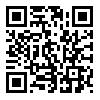<>
Volume 3, Issue 2 (Journal of Language Teaching, Literature & Linguistics (JLTLL) 2020)
JSAL 2020, 3(2): 69-91 |
Back to browse issues page
Download citation:
BibTeX | RIS | EndNote | Medlars | ProCite | Reference Manager | RefWorks
Send citation to:



BibTeX | RIS | EndNote | Medlars | ProCite | Reference Manager | RefWorks
Send citation to:
(2020). A Study of the Shaqqaqiyah Sermon Based on the speech action Theory (Austin and Searle). JSAL. 3(2), 69-91.
URL: http://jsal.ierf.ir/article-1-63-en.html
URL: http://jsal.ierf.ir/article-1-63-en.html
Abstract: (2410 Views)
Speech theory or speech action is a theory that is used to analyze discourse and to get the purpose and intention of the speaker. This theory was first proposed by Austin and developed by Searle. Searle's views on speech action are of particular importance and are used in the linguistic, sociological, and philosophical sciences. He categorized the speech action into five groups: a) Representative: This type of utterance expresses the speaker's commitment to the truth of a statement b) Directive: which encourages the audience to do something. C) Commissive: Expresses the speaker's commitment to do something. D) Expressive: Expresses the speaker's feelings in the face of an event. E) Declaration: The speaker announces new conditions to the audience. Searle uses four factors to distinguish between the five types of utterances: non-expressive point, adaptation, mental state, and content. Examining Shaqqaqiyah's sermon based on Searle's speech action shows that representative speech action - in the explicit sense - and expressive speech action -in the implicit sense - with the non-expressive point of satire have the highest number in this sermon and finally the commissive speech action was used, but the directive speech action and declaration have not been used in any way. The adaptation of the situational context of the sermon to the types of utterances used in the text and their frequency shows the high power of the audience and his understanding of the contextual context. The method used in this article is descriptive-analytical.
Subject:
Discourse Analysis
Received: 2023/05/21 | Accepted: 2020/08/31 | Published: 2020/08/31
Received: 2023/05/21 | Accepted: 2020/08/31 | Published: 2020/08/31
| Rights and permissions | |
 |
This work is licensed under a Creative Commons Attribution-NonCommercial 4.0 International License. |





